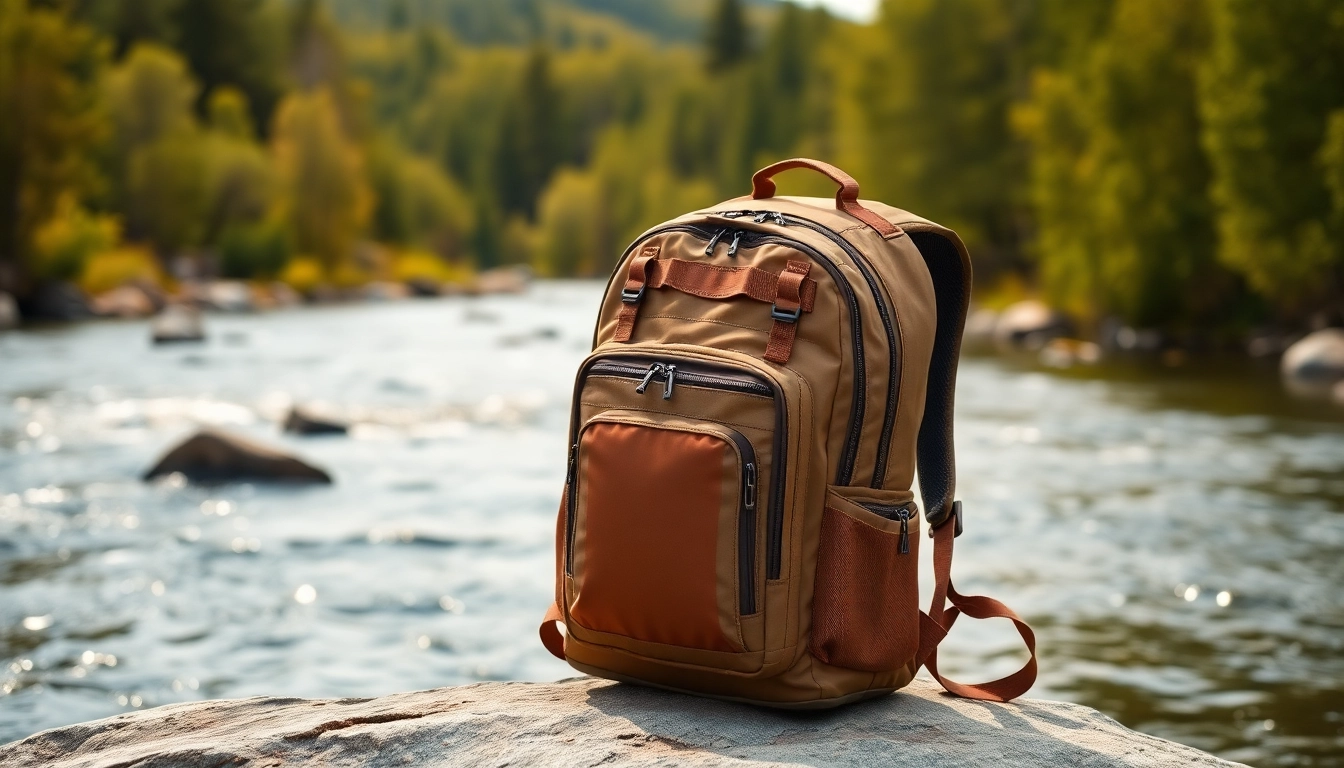
Understanding the Importance of a Fly Fishing Backpack
For every angler, whether a novice or a seasoned pro, a well-equipped fly fishing backpack is not merely an accessory; it’s an essential tool that enhances every fishing trip. A Fly fishing backpack offers the convenience of carrying vital gear, ensuring that your fishing experience is both enjoyable and efficient. This article delves into the crucial aspects of a fly fishing backpack, detailing its significance and how it elevates your overall fly fishing experience.
Why You Need a Dedicated Fly Fishing Backpack
Unlike regular backpacks, a fly fishing backpack is specifically designed to accommodate the unique needs of anglers. These backpacks provide specialized compartments for tackle, tools, and other essential items, making it easy to stay organized on the water. Here are several reasons why investing in a dedicated fly fishing backpack is a wise choice:
- Enhanced Organization: Dedicated compartments help categorize your gear, ensuring that you can swiftly access whatever you need without rummaging through a chaotic bag.
- Water Resistance: Fly fishing backpacks often come equipped with waterproof materials or coatings, protecting your gear from splashes or unexpected rain showers.
- Specialized Features: Many backpacks feature rod holders, hydration reservoirs, and easy-access pockets for tippet and flies, catering specifically to fly-fishing needs.
Benefits of Investing in Quality
Investing in a high-quality fly fishing backpack pays dividends in durability and functionality. A cheap, poorly made backpack might save you money initially but could compromise your fishing experience.
- Longevity: High-quality materials enhance the backpack’s lifespan, meaning your investment will serve you for many seasons.
- Comfort: Ergonomically designed backpacks offer superior support and comfort, allowing you to carry your gear without straining your back, even during long hikes to remote fishing spots.
- User Experience: Quality backpacks typically feature easier-to-use zippers and clasps, more effective storage solutions, and thoughtful design, making your outdoor experience more enjoyable.
How a Fly Fishing Backpack Enhances Your Experience
A fly fishing backpack doesn’t just serve a functional purpose; it enhances your entire fishing adventure. Key enhancements include:
- Easy Mobility: With all your gear organized and easily accessible, you can move swiftly between fishing spots without being weighed down.
- Increased Fish Catching Opportunities: The time saved by quickly accessing your gear means more time spent fishing, potentially increasing your catch rate.
- Confidence on the Water: Being well-prepared with quality gear empowers anglers to tackle various fishing conditions, heightening their overall fishing confidence.
Key Features to Look For in a Fly Fishing Backpack
Choosing the right fly fishing backpack can be a daunting task, given the variety of options available. Here’s a breakdown of key features to consider when making your decision:
Comfort and Ergonomics
Comfort is paramount, especially if you’re planning to hike to your fishing location. Look for backpacks with:
- Padded Straps: These enhance comfort on your shoulders, especially during long carries.
- Hip Belts: Recommended for heavy loads, hip belts help distribute weight across your body.
- Ventilation: A well-ventilated back panel minimizes sweating and adds comfort during warmer weather.
Durability and Weather Resistance
Weather can be unpredictable when you’re outdoors. A fly fishing backpack should be both durable and water-resistant. Consider:
- Material: Look for high-denier nylon or other rugged materials that can withstand elements and abrasion.
- Sealed Seams: This feature ensures that water cannot seep through the stitching, protecting your gear.
Organization and Accessibility
Efficient organization helps minimize distractions and saves time. Look for features that provide optimal organization:
- Multiple Compartments: Separate compartments for tools, bait, first aid, and other essentials can prevent confusion.
- Easy Access Pockets: Pockets designed for quick access to frequently used items can significantly improve your efficiency.
- External Attachment Points: D-Rings or molle webbing on the outside of the backpack can hold extra gear and gadgets.
Types of Fly Fishing Backpacks for Different Needs
Not all fishing trips are the same, so understanding the various types of fly fishing backpacks is essential. Here’s a closer look at the different categories:
Day Trip Packs
Ideal for short fishing excursions, day trip packs are compact yet spacious enough to hold essential gear. Features include:
- Lightweight Design: These packs typically weigh less, making them easier to carry on short trips.
- Quick Access: Often with external pockets for immediate access to fly boxes and tools.
Weekend Expedition Packs
For weekend getaways, these packs are designed for longer trips requiring more gear. Look for:
- Increased Capacity: Larger compartments to store essentials like extra clothes, food, and more fishing gear.
- Hydration Systems: Many have integrated hydration systems for convenient access to water during long hikes.
Specialized Packs for Specific Fishing Techniques
Some packs cater to unique fishing styles or techniques, such as saltwater or backcountry fishing, designed with diverse features such as:
- Rod Holders: Integrated solutions for safely carrying fishing rods.
- Reinforced Bottoms: Added durability for packs frequently set down on rocky surfaces or sand.
Maintaining and Caring for Your Fly Fishing Backpack
Proper maintenance of your fly fishing backpack can ensure its longevity. Here’s how:
Cleaning Tips for Longevity
A clean backpack is a lasting backpack. Regular maintenance includes:
- Surface Cleaning: Wipe down with a damp cloth after every use to remove dirt and debris.
- Deep Cleaning: At least once a season, hand wash or machine wash per the manufacturer’s instructions.
Storage and Organization Strategies
When not in use, proper storage can help maintain the integrity of the backpack:
- Avoid Compression: Store the pack loosely; packed straps can cause long-term damage.
- Keep Dry: Ensure it’s completely dry before storing to prevent mold and mildew.
Repairing Common Wear and Tear
Even with careful use, backpacks may develop issues. Here are some common repairs:
- Patch Small Tears: Use fabric patches or seam tape to cover minor damages immediately.
- Replace Broken Zippers: Invest in high-quality replacements if your zippers start to fail.
Where to Buy the Best Fly Fishing Backpack
Purchasing a fly fishing backpack requires not only knowing where to buy but also understanding how to identify the best options available:
Online Retailers and Marketplaces
Online shopping offers a plethora of options. Popular platforms include specialty fishing gear websites and major online marketplaces where you can compare features and read user reviews.
Local Sporting Goods Stores
Visit local shops for hands-on experience. You can often see and feel the backpacks, which helps in making the right choice. Additionally, store experts can offer valuable insights about specific products.
Comparing Prices and Reviews
When buying a fly fishing backpack, comparing prices should not be overlooked. Utilize online tools to compare options based on customer reviews, which can help you gauge quality and durability before your final purchase.





